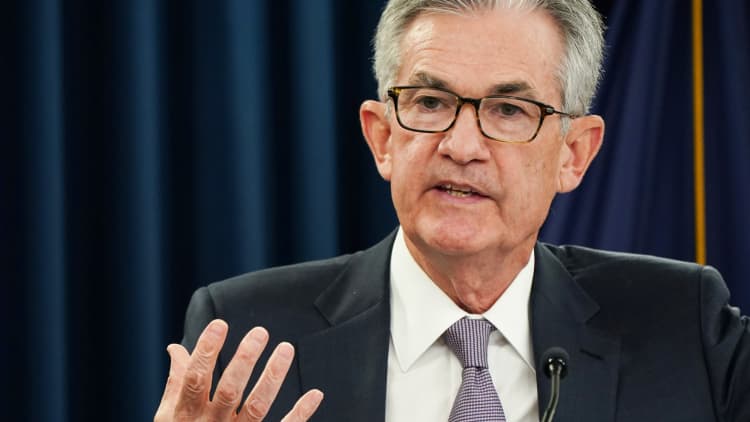Big banks and hedge funds helped fuel disruptions in the overnight lending markets a few months ago that continue to pose a threat to the financial system, according to a Bank for International Settlements analysis.
A mid-September cash crunch led to a spike in very short-term rates in the repo markets, where banks exchange high-quality collateral for cash with an agreement to buy back those assets with interest. Repo is the essential plumbing for banks to conduct their operations.
Federal Reserve officials have attributed the problem to a rush of corporate tax payments and settlement for an unusually large settlement in Treasury bond auctions.

However, the BIS said that while those two factors help explain some of the problems, they fall short of a full accounting.
“None of these temporary factors can fully explain the exceptional jump in repo rates,” the bank wrote.
Other factors the institution cited include the heavy reliance on the “Big Four” banks for funding, the increased role that hedge funds are playing on the demand side for funding, and the adjustments that market participants are making following an extended period of ample reserves that has changed over the past two years.
“Cash balances held by the US Treasury in its Federal Reserve account ... grew in size and became more volatile, especially after 2015,” the BIS added. “The resulting drain and swings in reserves are likely to have reduced the cash buffers of the big four banks and their willingness to lend into the repo market.”
Fed officials have puzzled over the banks’ unwillingness to lend into the market when the Sept. 17 disruption happened. Discussion has centered around the role that post-financial crisis capital regulations have played as well as the interest the Fed continues to pay on bank reserves.
Such reluctance in the future poses continued threats, the report said.
Specifically, in the event that the Treasury continues to draw reserves down, banks will be unlikely to want to release theirs. Also, as the Fed adjusts its balance sheet, that tends to have a restrictive impact on money markets.
“If it persists for a prolonged period, it may result in hysteresis effects that hamper market functioning,” the BIS researchers said. “For instance, the internal processes and knowledge that banks need to ensure prompt and smooth market operations may start to decay.”

Worries over ‘sustained disruption’
A breakdown in the repo market contributed to the sense of panic during the financial crisis.
Banks’ sudden unwillingness to lend to each other in 2008 created a crisis of confidence leading to illiquidity and, ultimately, the collapse of Lehman Brothers and the near failure of multiple other major institutions. To be sure, that situation was far different and worse than current conditions.
However, the BIS cautioned that repo volatility still can cause substantial damage.
“Any sustained disruption in this market, with daily turnover in the US market of about $1 trillion, could quickly ripple through the financial system. The freezing-up of repo markets in late 2008 was one of the most damaging aspects of the Great Financial Crisis,” the bank said.
The Fed, though, has come under some criticism for not foreseeing how pronounced the funding shortage would be as it reduced its Treasury holdings, shrinking its balance sheet.
Around mid-2018, the interest rate on the overnight repo rate began climbing above the interest the Fed pays on excess bank reserves. The Fed responded by making several technical adjustments to the IOER.
In response to the Sept 17 issues, the Fed has been conducting daily market operations to ensure that the system is functioning properly and that its benchmark interest rate is staying within the range it targets.
The BIS said the Fed’s “ongoing operations have calmed markets.”
The BIS is owned by a consortium of 60 global central banks and helps promote monetary and financial stability.







